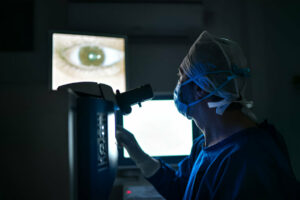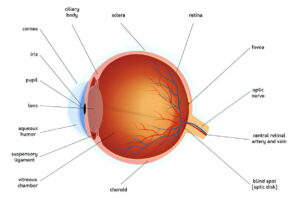Eye care professionals must always evaluate blurred or doubled vision as soon as they notice doubled images or blind spots, since these symptoms could indicate serious underlying conditions that require immediate medical treatment.
Double vision may result from misalignments between the eyes. Treatment options may include eye exercises, surgery or medications such as an eye patch or prism glasses depending on what caused this misalignment.
Refractive Errors
Light should pass from lens and cornea through to retina at the back of eye normally; when this process fails to operate as intended, an individual may experience blurry vision – this condition is known as refractive error.
There are four primary refractive errors, myopia (nearsightedness), hyperopia (farsightedness), astigmatism and presbyopia (age-related farsightedness). When someone suffers from refractive error, two mismatched images are sent to their brain which causes discomfort – in young children this could impair visual development while for adults it may make it more challenging to see close objects clearly or perform tasks such as threading a needle.
Eye care professionals use various tests to diagnose double vision. First they will gather your medical history, including when your symptoms first appeared and whether or not they persist over time. Next they’ll perform a physical exam that includes visual acuity tests in each eye – this allows them to distinguish whether it’s monocular or binocular double vision.
Refractive errors are the main source of blurred and double vision, and are most frequently corrected with corrective lenses such as eye glasses or contact lenses (for adolescents and adults alike). Other methods, including laser eye surgery such as LASIK can also be employed to treat such errors.
Glaucoma can cause sudden or gradual double vision symptoms that include wavy lines or spots in vision and colors becoming faded; sudden symptoms should seek emergency medical assistance immediately. Other common causes for blurred and double vision include macular degeneration which also results in wavy lines or spots as well as retinal detachment which may result in sudden blindness that cannot be reversed.
Strabismus (Squint)
For optimal vision, eyes must be properly aligned. This is achieved using six eye muscles which coordinate and balance eye movement; when these are misbalanced or not working efficiently enough, misalignment occurs and vision may become unclear (squint).
Esotropia, or inward eye turning, is one of the most prevalent types of strabismus and typically presents itself at birth or shortly thereafter; it may also result from head trauma or physical injuries to the eye socket.
Children are at greater risk for developing strabismus than adults due to still-developing muscles that control eye movement, such as cataracts or an eye tumor; other causes could include neurological conditions. Conversely, it may also result from conditions that involve both muscles controlling eye movement and nerves transmitting signals from muscles that control them (ptosis or neurological disorder).
Paralytic Strabismus can also cause squints, as one eye muscle becomes weak or paralyzed, which may begin from birth but more commonly affects children as they grow. Paralytic strabismus may also be related to amblyopia (lazy eye).
Normal vision occurs when both eyes are focused on an object with visual fields aligned in parallel, enabling the brain to fuse images from each eye into one three-dimensional view of reality. Misaligning of eyes causes the brain to be unable to combine images properly, leading to double vision. This may appear either vertically or horizontally separated and could appear as one image on top of another, or even appear obliquely separated in an arc shape. Oblique double vision can result from several causes, including strabismus, refractive errors and ptosis. Cataracts, myopia and hyperopia are other frequent culprits causing this type of double vision in older eyes; usually however it resolves itself as the eyes mature.
Neurological Disorders
To see correctly, it is crucial that both eyes work as one unit. Otherwise, two images could form and cause double vision. Under normal conditions, however, both eyes point toward one object simultaneously and then their brain “fuses” them together into a single image; this phenomenon is called binocular vision.
At times, eyes can point towards separate objects and this is known as monocular vision. While monocular vision can usually be dealt with easily by suppressing unwanted images in order to function normally, when both eyes show different images simultaneously this is known as diplopia and more difficult for brain to process and may have an adverse impact on quality of life.
There are various disorders that can cause blurry or double vision, from eye diseases to neurological conditions that impede how the eyes and the brain interact.
Convergence insufficiency, for instance, is one of the primary causes of double vision and should not be mistaken as learning difficulties; instead it could indicate concussion or other forms of brain injury. Adults are sometimes also affected. Convergence insufficiency usually affects school-age children and adolescents but adults can also be affected. Diagnosing it may be difficult, since its symptoms often overlap with learning difficulties and therefore go undetected; or can even be mistaken as concussion-like symptoms or concussion effects from brain injuries sustained through head impacts or injuries from falls from great heights or drops from great height.
Multiple Sclerosis, Stroke and Parkinson’s disease can also contribute to blurry or double vision by inducing inflammation that alters eye movement patterns, leading to either blurry or double vision.
Blurry or double vision should not be ignored, particularly if it is accompanied by other symptoms like headache, weakness on one side of the body, numbness or tingling in the face or neck or difficulty speaking or walking. People experiencing such symptoms should consult a neuro-optometric rehabilitation professional trained in diagnosing, evaluating and treating visual system disorders.
Diseases
Blurry vision or double images may be caused by eye disease or health conditions that affect both eyes or the nervous system. Sudden changes in vision such as blurriness, blind spots (scotomas) or halos around lights should always be evaluated by an ophthalmologist or optometrist as these could indicate retinal detachments, brain tumors, eye trauma or an incoordination between both eyes (binocular diplopia).
Blurred vision is most often caused by irregular corneal and lens curvatures that prevent light from being focused appropriately onto the retina, and glasses or contact lenses may help correct this problem.
Other illnesses that cause blurry vision include cataracts, glaucoma, retinitis pigmentosa and age-related macular degeneration – each can result in permanent vision loss if left untreated.
Hyperopia or farsightedness is another condition that causes blurry vision, caused by having too short of an eyeball or having an insufficiently curvier cornea; nearer objects appear out of focus while distant ones become clear. Hyperopia can be corrected using prescription glasses or contacts or through refractive surgery.
Convergence Insufficiency, or CVI, occurs when the eyes cannot maintain a steady image of near objects, leading to double vision and eye strain. CVI is most frequently diagnosed in school-age children and adolescents but can occur in anyone of any age. Treatment includes eye exercises, bifocals or monovision glasses as well as, potentially, surgery.
If you have blurry or double vision, visit an eye care professional as soon as possible. An ophthalmologist will be able to quickly diagnose its source and provide prompt treatment so it does not worsen further. If you’re experiencing eye pain, discomfort or any other signs of vision trouble, call our offices in St. Petersburg, Tampa and Clearwater right now – they are conveniently located to make appointments easy for you! We accept most medical insurance plans; bring along your card for your visit if you do have it; otherwise we provide receipts so your insurance company reimburses us directly if necessary. We look forward to seeing you soon! We accept most medical insurance plans; simply bring along your current card when visiting one of our offices if that applies. If this applies, or is unaffordable then please bring along receipt for reimbursement from insurance company directly.









